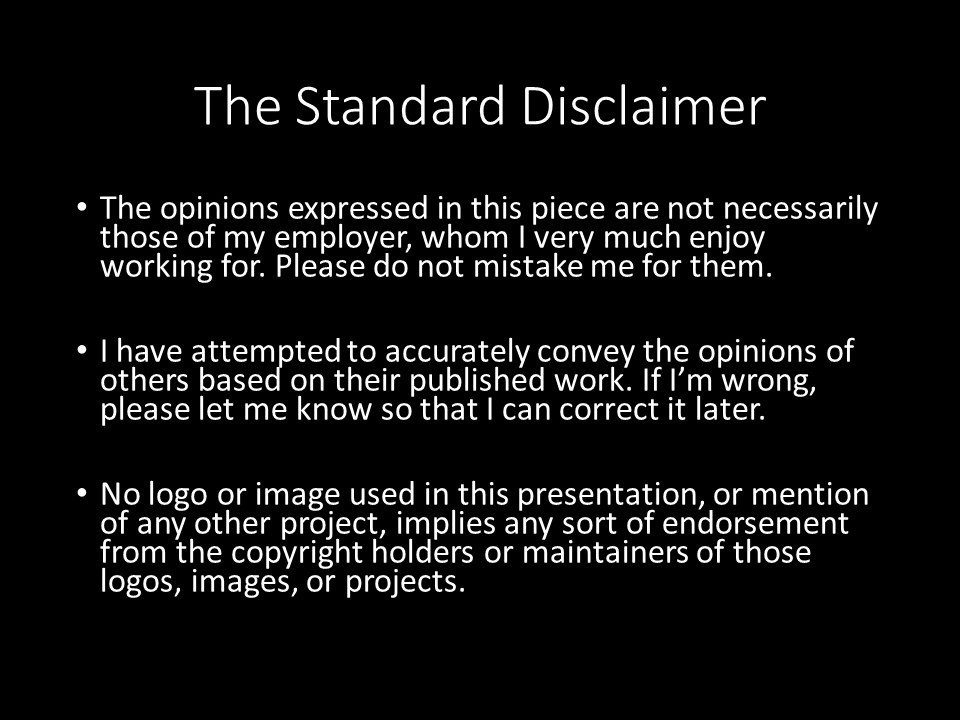
A few things before we begin.
- The opinions expressed in this presentation are not necessarily those of my employer, whom I very much like working for. Please do not mistake my opinions for theirs.
- I have attempted to accurately convey the opinions of others based on their published work. If I'm wrong about this, please let me know so I can make corrections.
- No logo or image used in this presentation, or mention of any other project, implies endorsement from the owners and/or maintainers of those projects.
What Gives You The Right?
I'm mostly an end user and documentation writer for things. While I have been known to follow someone else's clever hack or idea of putting something to use for a purpose other than what it was intended, I'm not necessarily the person that's elbows-deep in the source code or trying to find ways of obtaining root in new technologies. But, in a lot of the contexts of my life around me, I'm an edge case, a power user, or someone who's thinking of things in a different light than others. Some of these reasons are physical, others generational, and still others because no two brains think about how to use things in exactly the same way. If you look at your own life, you will probably find that you, too, are an edge case somewhere. So you have the right to think about these things, too.
A lot of my examples are going to come from interacting with physical space and the implications for software and hardware that might entail. Since more and more of our applications are becoming augmented-reality or have accompanying pieces of hardware to have to interact with, thinking about space in the design is a thing to be reckoned with.